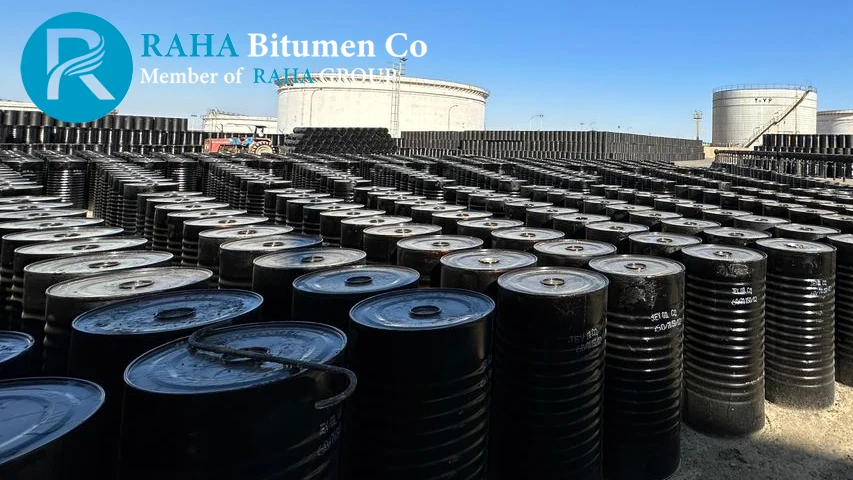
Interview
Polymer Modified Bitumen (PMB) is Asphalt but blended with more polymer materials.this materials added to Bitumen, which gives it extra strength, high cohesiveness and resistance to fatigue, stripping and deformations.
What is The Meaning of Polymer Modified Bitumen?
Polymer modified bitumen means adding additional materials to the bitumen to improve its performance characteristics. The incorporation of polymers into bitumen results in a material with superior properties compared to conventional bitumen.
Why Polymer Modified Bitumen ?
by reason of Polymer-modified bitumen (PMB) is a standard-grade bitumen combined with carefully selected synthetic or natural polymers to improve industrial properties. PMB is designed to make them more workable during application, and once laid, they are more resistant to deformation, fatigue, or cracking.
There are several reasons to use PMB in your projects:
- Better performance at low temperatures.
- Greater resistance to aging.
- Increase of penetration rate
- Lower thermal susceptibility.
Types of Polymer Modified Bitumen
1. Filler Polymer Bitumen
Filler is a specialized material used in road construction and maintenance to fill cracks, joints, and other imperfections in pavement surfaces. It combines bitumen with polymers and fine fillers to create a compound with enhanced flexibility, adhesion, and durability.
As a result, Polymer Bitumen Filler not only repairs and seals cracks efficiently but also extends the lifespan of the pavement by providing a more resilient and durable surface.
Filler Uses
Filler can be used for repairing :
- holes
- cracks
- bubbles
- breaking points
- repairing roof grooves
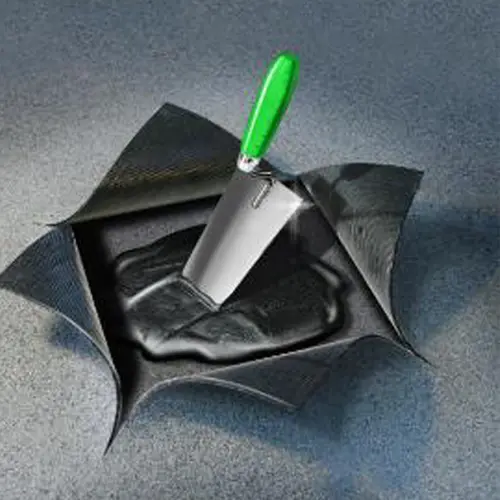
2. extender Polymer Bitumen
Extender polymer bitumen allows the formation of a durable and highly resistant seam against mechanical influences. The temperature resistance after curing ranges from -50°C to +90°C.
Also, Bitumen does not adhere to PE or PP. Not suitable for use in aquariums and terrariums or in conjunction with materials that come into contact with food.
Extender Uses
It is a Best bituminous sealant for effective sealing and bonding of joints between different roofing materials such as:
- bituminous tiles
- membranes
- roof tiles
- galvanized sheet metal
It is characterized by excellent adhesion to surfaces such as:
- concrete
- plaster
- brick
- wood
- aluminum
- glass
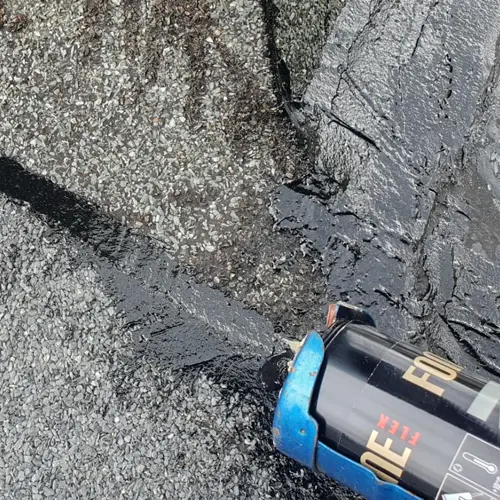
3. Polymer Rubber-Plastic
Polymer rubber-plastic is a kind of bitumen produced by adding a combination of rubber and plastic polymers to conventional bitumen.
The addition of rubber and plastic polymers improves the performance and durability of the bitumen, making it more suitable for use in challenging environmental conditions, such as high temperatures and heavy traffic.
Rubber-Plastic Uses
- high temperatures
- heavy traffic
4. Fiber Polymer Bitumen
Polymer Modified Bitumen modified asphalt concrete manufactured by feeding the fiber or the polymeric compound into the asphalt plant mixer after the aggregate has been loaded in to the mixer immediately before the bitumen is added. The fibers within the bitumen matrix help to prevent cracking and improve the materials .
The addition of fibers, such as polyester or glass, provides reinforcement, increasing the tensile strength and fatigue resistance of the bitumen.
Fiber/polymeric compound asphalts may be preferable technology whenever a pavement is required to perform structural resistance, stiffness and resistance to rutting.
Fiber Uses
- roofing
- waterproofing
- applications
Different Grades of Polymer Modified Bitumen
Polymer Modified Bitumen (PMB) is classified into different grades based on its physical properties, such as penetration, softening point, and elastic recovery, which determine its suitability for various applications.
Common PMB grades include:
- PMB 10/40-70
- PMB 25/55-55
- PMB 45/80-55
- PMB 45/80-60
- PMB 45/80-65
- PMB 45/80-75
- PMB 75/130-60
Structure of Polymer modified Bitumen Grades
PMB Grades have two parts structure included:
Penetration Range (X/Y)
The first part of the grade, represented as “X/Y,” indicates the penetration range of the bitumen, measured in tenths of a millimeter (dmm) according to the needle penetration test at 25°C.
Minimum Softening Point (Z)
The second part, “Z,” represents the minimum softening point of the bitumen in degrees Celsius (°C), determined by the Ring and Ball test.
Hardness and Flexibility of PMB
A lower penetration value, such as in PMB 10/40-70, indicates a harder bitumen suitable for high-stress areas like airport runways and highways, while higher penetration values, like in PMB 45/80-55, are used where more flexibility is needed, such as in pavements subjected to thermal expansion and contraction.
Manufacturing Processes of Polymer Modified Bitumen
The two primary methods for producing Polymer Modified Bitumen are the Wet Process and the Dry Process. Each method has its unique approach to incorporating polymers into bitumen.
Types of Manufacturing Processes
- Wet Process
- Dry Process
1. Wet Process of PMB
The Wet Process is the most commonly used method for producing PMB. In this process, the polymer is directly mixed with the bitumen before it is applied to the aggregate or substrate. The mixing can be done in a central plant or on-site, depending on the requirements.
The Wet Process involves heating the bitumen to a specific temperature (usually between 160°C to 180°C) to reduce its viscosity and make it easier to mix. Polymers, often in the form of granules or pellets, are then added to the heated bitumen. The mixture is agitated and mixed thoroughly to ensure a homogeneous blend. The process typically requires specialized equipment such as high-shear mixers, colloid mills, or static mixers. High-shear mixers are preferred due to their ability to break down polymer particles and achieve a uniform dispersion within the bitumen matrix.
2. Dry Process
The Dry Process is less commonly used but can be effective in certain applications. In this method, the polymer is mixed with the aggregate before bitumen is added.
In the Dry Process, the polymer is mixed with the aggregate material (such as gravel or crushed stone) in its solid form. The polymer-coated aggregate is then combined with the hot bitumen during the mixing phase of the asphalt production process. The mixture is subsequently laid down and compacted in the usual manner.
This method typically uses standard asphalt mixing plants and does not require special equipment for polymer addition. The process relies on conventional drum mixers or batch plants where the polymer and aggregate are blended first before adding bitumen.
Types of Additives
- Cross-Linking Agents
- Anti-Stripping Agents
- Compatibility
- Stabilizers
- Flow Improves
Common Application of PMB
In Summary Polymer Modified Bitumen Applications is used in airport runways, bridge decks, and other infrastructure projects that demand high-performance materials.
PMB Advantages
- High elasticity and higher softening point
- polymer Bitumen lesser cracking and rutting
- Much higher constancy
Packing of Polymer Modified Bitumen
Polymer Modified Bitumen Can be packed in kind of Major:
- steel Drum 180 Kg
- Jumbo Bag 1MT
- Carton box 25kg
steel Drum 180 Kg
- Loading 110 Drum in 20ft Container = 19.80 Ton Net
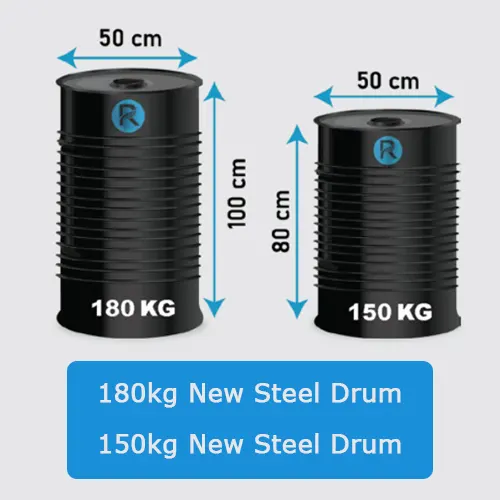
Jumbo Bag 1MT
- 1MT Jumbo Bag with Pallet and Steel Cage: Loading 20Ton in 20ft Container = 20Ton Net
- 1MT Jumbo Bag without Pallet and Steel Cage: Loading 20Ton in 40ft Container = 20Ton Net
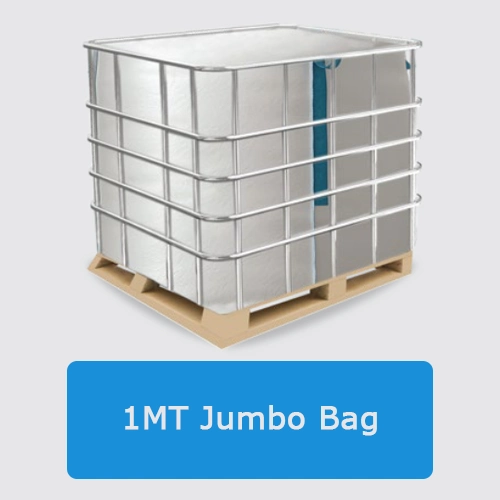
Carton box 25kg
- Loading 920 Bag in 20ft Container= 23
Ton Net
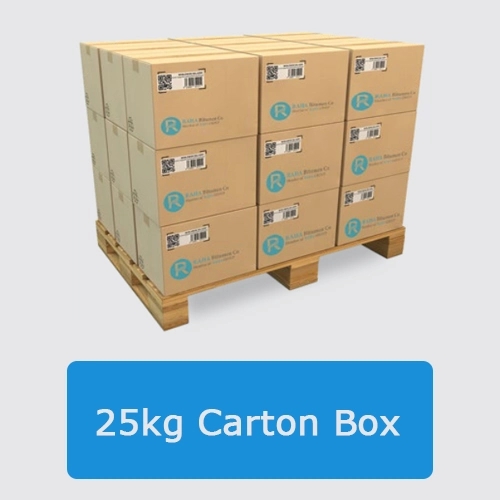
Grades of Polymer Modified Bitumen and Their Specifications
| Property | Units | PMB 10/40-70 |
PMB 25/55-65 |
PMB 45/80-60 |
PMB 75/130-60 |
|---|---|---|---|---|---|
| Penetration @25°C | 0.1mm | 10-40 | 25-55 | 45-80 | 75-130 |
| Softening point | °C | ≥ 70 | ≥ 65 | ≥ 60 | ≥ 60 |
| Cohesion. Strength-ductility | J/cm2 | ≥ 2 a 15ºC | ≥ 2 a 15ºC | ≥ 2 a 15ºC | ≥ 2 a 15ºC |
| Fraass breaking point | °C | ≤ -5 | ≤ -7 | ≤ -12 | ≤ -15 |
| Elastic recovery at 25ºC | % | TBR | ≥ 50 | ≥ 50 | ≥ 60 |
| Difference in softening point | °C | ≤ 5 | ≤ 5 | ≤ 5 | ≤ 5 |
| Difference in penetration point | 0.1mm | ≤ 9 | ≤ 9 | ≤ 9 | ≤ 13 |
| Flash point | °C | ≥ 235 | ≥ 235 | ≥ 235 | ≥ 220 |
Specifications for Different Grades of the PMB
| No. | DESIGNATION | PMB 120 | PMB 70 | PMB 40 | TEST METHOD |
|---|---|---|---|---|---|
| 1 | PENETRATION AT 25 °C, 1/10 MM, 100G, 5 SEC | 90-150 | 50-90 | 30-50 | ASTM D5 |
| 2 | SOFTENING POINT,(R&B), °C, MIN | 50 | 55 | 60 | ASTM D36 |
| 3 | ELASTIC RECOVERY AT 15 °C, %, MIN | 60 | 60 | 60 | ASTM D6084 |
| 4 | FLASH POINT, COC, °C, MIN | 220 | 220 | 220 | ASTM D92 |
| 5 | SEPARATION, DIFFERENCE IN SOFTENING POINT, (R&B), °C, MAX | 3 | 3 | 3 | — |
| THIN FILM OVEN TEST & TEST ON RESIDUE | |||||
|---|---|---|---|---|---|
| 7a | LOSS IN MASS, %, MAX | 1.0 | 1.0 | 1.0 | ASTM D1754 |
| 7b | REDUCTION IN PENETRATION OF RESIDUE AT 25°C, 100G, 5S, %, MAX | 35 | 35 | 35 | ASTM D5 |
| 7c | INCREASE IN SOFTENING POINT, °C, MAX | 7 | 6 | 5 | ASTM D36 |
| 7d | ELASTIC RECOVERY AT 25 °C , %, MIN | 50 | 50 | 50 | ASTM D6085 |


